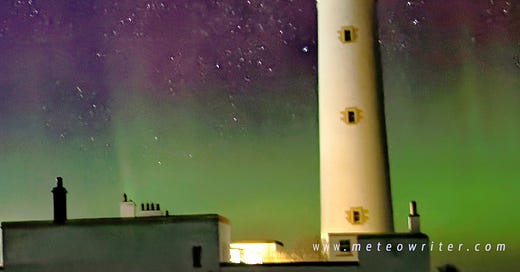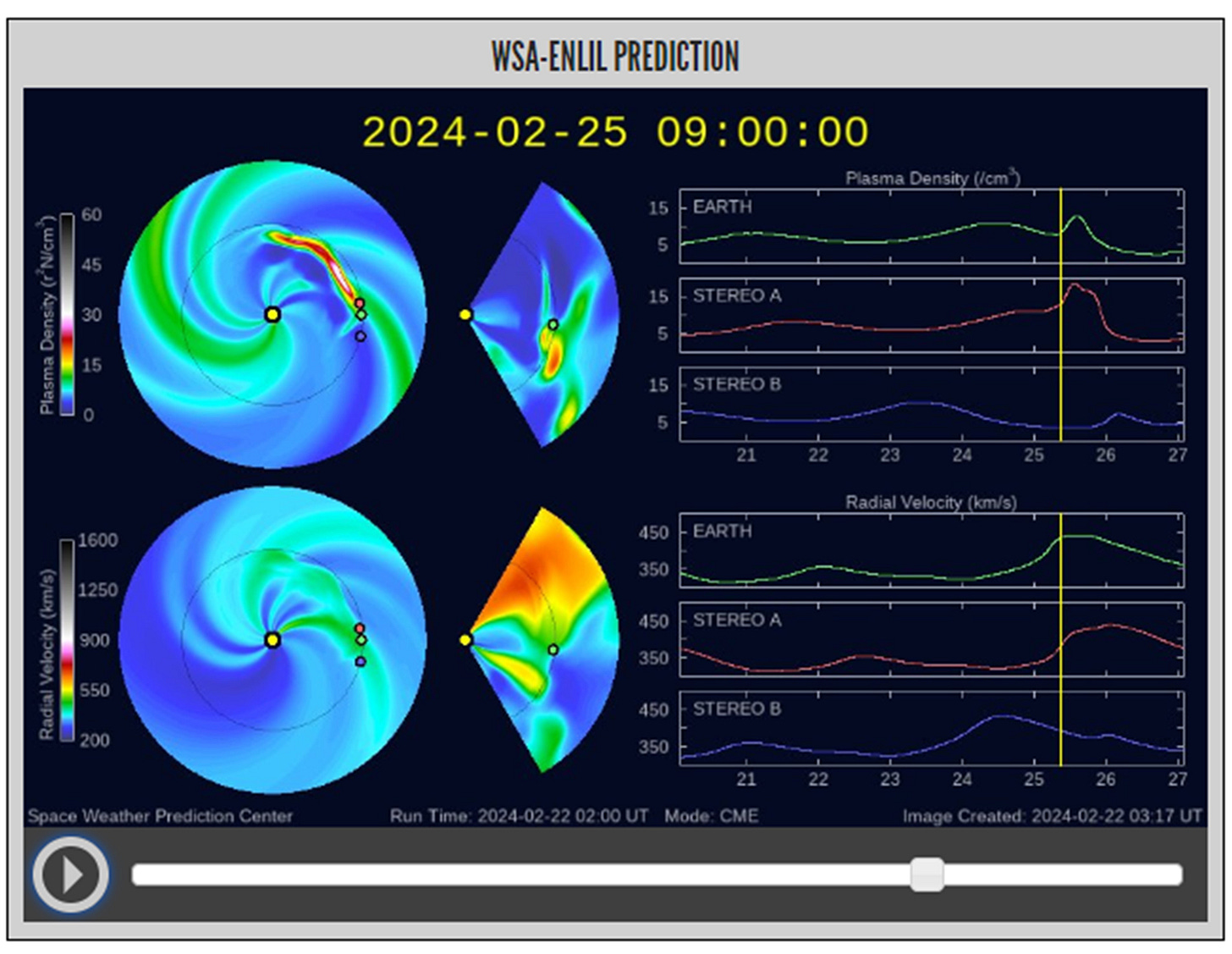There’s a pilot’s lament that goes along the lines of ‘If the weather looks good tomorrow, you won’t have time, and if you have time the airfield will be closed …’ and so on. Watching the Northern Lights can be a bit like that as several ingredients have to come together for success, not least the weather and suitable solar conditions.
The Northern Lights seen on a cold winter’s evening near Dunbar
The lights are caused when charged particles from the earth’s magnetosphere stream into the atmosphere, causing oxygen and nitrogen to emit coloured light. Greens are the most common but the Shetland name of the Mirrie Dancers hints at the shimmering red and pink pillars that sometimes appear.
However, it’s been a lean time for sightings recently after the promise of last September when the lights were spotted as far south as Cornwall and last Sunday was a good example of a false alarm. Initially, the signs were mildly promising with the Met Office’s Space Weather Forecast saying:
“There is the possibility of a glancing blow from a CME late on Day 1 (24 Feb) or early on Day 2 (25 Feb). Current solar winds are at low levels but a coronal hole fast wind is expected to connect with the Earth either late on Day 1 or more likely during Day 2. Peak wind speeds associated with this feature are likely to reach up to 500 km/s before declining again from Day 3 into Day 4 (26-27 Feb).”
All to no avail thought as the promised event was nowhere near strong enough to overcome the light of the full moon.
Here, a Coronal Mass Ejection (CME) is a massive eruption from the surface of the sun, which the USA’s National Oceanic and Atmospheric Administration (NOAA) has described as ‘a billion tons of plasma ejected from the sun, traveling at a million miles per hour’.
One of their computer predictions last weekend showed this well. This is best seen in the top left image below, which shows the sun at its centre, the earth to the right, and the CME as a huge ragged mass of plasma superimposed on top of the spiralling shapes of the solar wind.
NOAA computer simulations predicting a glancing CME blow on the morning of 25 February 2024; the two dots next to the earth are NASA spacecraft
Indeed, despite the light’s gentle appearance, the speeds and forces involved are hard to imagine. One way to appreciate this is to look up computer animations of the magnetosphere during the passage of a strong CME, some of which show the magnetic field lines behind the earth buffeted like a flag on a breezy day. In major events they sometimes crash together in a phenomenon called magnetic reconnection, which incredibly can generate enough energy for particles to stream back towards the poles, causing some of the strongest displays.
Anyway, that’s just for interest and despite last weekend’s disappointment there is still a chance of seeing the Northern Lights in the next few weeks, before summer really gets underway. Indeed, one of my best ever sightings was in late March as I described recently:
“By now determined to see a stronger display, later that month I took a chance and set off north at about 10pm on the strength of the latest predictions. My first stop was at beautiful Loch Leven near Kinross but parked in a layby there was no sign of the promised lights so after a brief stop near Perth I went on to the Loch of the Lowes near Dunkeld, famed for its osprey sightings in spring and summer. However, after a spooky hour waiting in the woods near the lake shore, the lights still weren’t cooperating so I headed south again, stopping a couple of times in areas of open farmland just in case.
By now it was around 3am and I decided to make a final attempt by calling in at Loch Leven again. Having set up camera and tripod, I waited more in hope than expectation when suddenly at about 4am the northern sky started to take on a slight greenish glow. Surely not I thought and ran back to the car to see if any other sightings were being reported, and to my amazement the anticipated CME had arrived, much later than expected. Back at the camera, the glow began to intensify and when a meteor streaked past that was the icing on the cake. Other enthusiasts reported sightings at a similar time from Morecambe, Loch Lomond, Shetland and Skye.” From the Scotsman Magazine, 17/02/24
So, I’m still hoping to see the lights this spring and if you’re interested to learn more about improving your own chances I give more tips in Spectacular Britain.








I have yet to see either Aurora. I got close last year when I managed to pick up a pink glow on my camera from the Gower Peninsula, but it was not visible to the naked eye. I have the AuroraWatch app on my phone for alerts. Seeing it remains firmly on my bucket list!